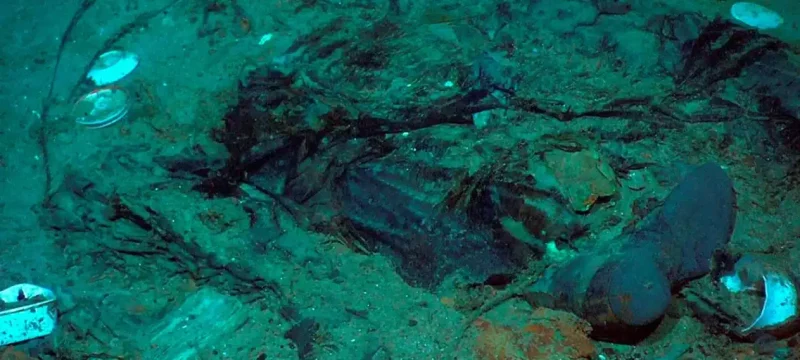Rescue teams announced on Thursday that a debris field has been found by an underwater robot near the wreck of the Titanic during the search for a missing submersible with five people on board. Despite concerns that the submersible’s oxygen may have run out, the multinational mission remains focused on finding the crew alive.
The United States Coast Guard, part of the unified command overseeing the operation, stated in a tweet that experts are currently evaluating the information regarding the debris field found within the search area near the Titanic. The Coast Guard did not provide further details but scheduled a press briefing in Boston later in the day.
Read More: Vice Chairman Engro is gone after a submersible craft goes missing in the Atlantic Ocean
To aid in the search efforts, two additional remotely operated vehicles (ROVs) were deployed on Thursday. The search area covers a vast expanse of the North Atlantic, ranging from the ocean’s surface to over two miles (nearly four kilometers) below.
Initial estimates suggested that the submersible had up to 96 hours of emergency air. As the potential deadline passed, Rear Admiral John Mauger of the US Coast Guard emphasized that rescuers remained fully committed to the search operation, taking into account the passengers’ will to live.
The response to the incident has seen an increase in assets and experts joining the operation. Sonar technology has also detected unidentified underwater noises, prompting the search teams to concentrate their efforts in proximity to these sounds.
The French research vessel Atalante deployed an unmanned robot capable of searching depths of up to 6,000 meters on Thursday, while the Canadian vessel Horizon Arctic deployed a robot that had already begun its search on the ocean floor.
The Victor 6000, dubbed “the main hope” for an underwater rescue, is being used in the search. Additionally, vessels carrying medical staff and a decompression chamber are en route to the area.
The 21-foot (6.5-meter) Titan submersible began its descent on Sunday morning but lost communication with its mothership within two hours of the journey. The passengers on board include British billionaire Hamish Harding, Shahzada Dawood and his son Suleman, both dual Pakistani-British citizens, OceanGate Expeditions CEO Stockton Rush, and French submarine operator Paul-Henri Nargeolet, known as “Mr. Titanic” for his frequent dives at the site. OceanGate Expeditions charges $250,000 for a seat on the submersible.
Search efforts have covered approximately 10,000 square miles (around 20,000 square kilometers) of surface water, equivalent to the size of the US state of Massachusetts. Recovering the submersible from the deep water would be a challenging task even if it is located.
The Navy has dispatched a specialized winch system and other equipment and personnel capable of lifting heavy objects from extreme depths. The Pentagon has also contributed three C-130 aircraft and three C-17s to support the search operation.
The Titanic, which sank in 1912 after hitting an iceberg during its maiden voyage, rests 400 miles off the coast of Newfoundland, Canada, more than two miles below the surface of the North Atlantic. Experts have highlighted the complexities and technical difficulties associated with operating a small vessel at such extreme depths.
Tom Zaller, who toured the Titanic in a submersible similar to the missing one 23 years ago, described the process as incredibly complicated and technical due to the immense pressure at those depths. The ongoing search operation involves a race against time to locate the submersible and ensure the safety of the passengers and crew still trapped underwater.









